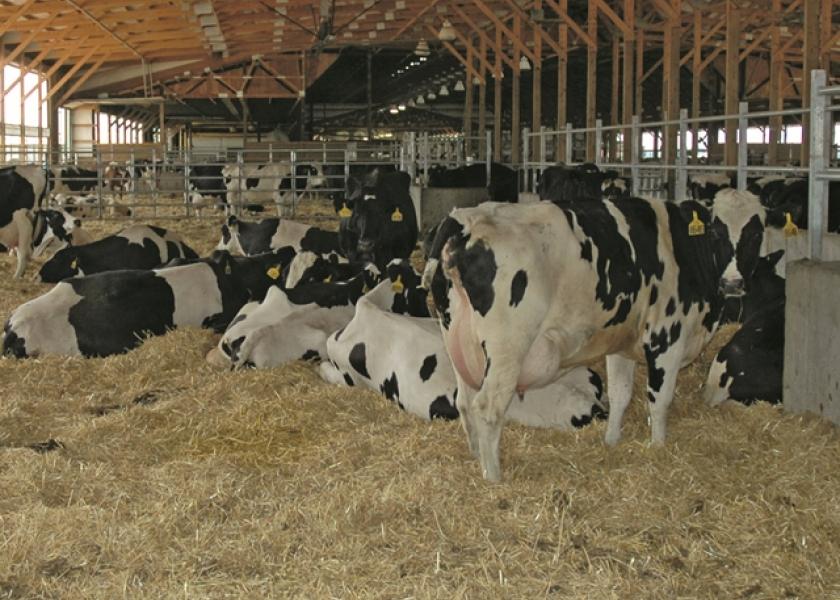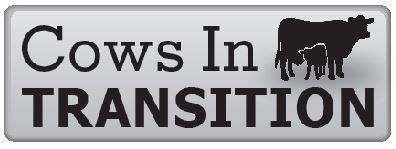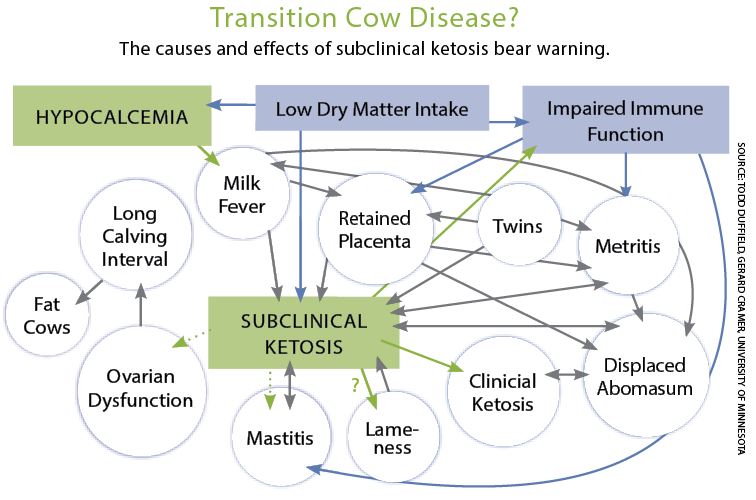Fresh Cow Ketosis Tests Pay Back Big

A drop of blood is all that’s needed
Editor’s note: This is the first of a six-part series on transition cow management that will run in 2015.
Most dairy farmers, unless they routinely test for subclinical ketosis, are blissfully unaware of how prevalent the disease is in their herds. But work in New York and Wisconsin herds done by veterinarian researchers Jessica McArt, Cornell University, and Gary Oetzel, University of Wisconsin, suggest subclinical ketosis is challenging fresh cows through early transition.
The study, done during the summer of 2010, involved 1,800 cows in four herds—two each in New York and Wisconsin. Nearly 45% of cows were subclincally ketotic during the first two weeks after calving.
The good news is subclinical cows that were treated responded well, averaging 1.5 lb. more milk per day, had fewer DAs and were culled less frequently. For every 100 fresh cows tested twice between three and nine days in milk, the net economic return was roughly $1,200.
What makes all this possible are easy-to-use test strips requiring just a drop of blood from the tail vein. A very small amount of blood is added to the end of the test strip and then read by a meter.
The Cornell and Wisconsin vet-erinarians have found the Precision Xtra ketone meter from Abbott
gives excellent results with no additional calibration needed from the human system.
The meter measures whole blood beta-hydroxybutyrate (BHBA). A reading of 1.2 mmol/L or more indicates subclinical ketotis.
The meter itself typically costs $50 and can be purchased at most veterinary distributors. The test strips are about $1.50 each.
“Spending $1.50 per BHBA test is cheaper than sending a blood sample to a lab, but more expensive
than cowside urine or milk tests,” Oetzel says. “[But] cowside urine and milk tests are not as accurate as the blood tests.”
How intensively you should test depends how prevalent subclinical ketosis is in your herd. To get a sense of total herd prevalence, Tom Overton, a specialist in dairy nutrition and physiology at Cornell University, recommends weekly monitoring of 15 to 20 cows that are three to 14 days in milk.
If 15% of these cows (two or three animals) have BHBA results higher than 1.2 mmol/L, you immediately know there is some level of subclinical ketosis occurring in the pen. That should trigger additional testing as well as an analysis of recent nutrition changes, pen moves, stocking density, heat stress or any other change that could influence cow behavior and feed intake.
“The test is fast, easy and cheap and is a great front-line monitoring tool,” says Overton. In addition to routine, weekly testing, farmers need to record results, track them and watch trends. But he also cautions that the test is not the end all and be all.
That’s why fresh cows should be observed daily, says Terri Ollivett, veterinarian, University of Wisconsin. Fresh cows should be locked up daily and individually observed from the both front and rear.
From the front, observe the cow’s attitude, whether her eyes are bright and ears are perky, and how aggressively she’s eating. From the rear, check rumen fill, udder fullness and symmetry.
If the animal doesn’t look or act normally and she is three to 14 days in milk, take a blood test to determine her ketone level. If she is ketotic, treat appropriately.
 |
Virtually all transtion cow ailments are connected to subclinical ketosis early in lactation. |
If you are finding you have to treat more than a few animals each week, you might have a more systemic problem. One of the critical components is adequate bunk space. The current recommendation is to have 30" of bunk space per animal in the pre- and post-fresh pens.
Problems often arise when you have a lesser amount of bunk space or higher stocking densities. These might decrease dry matter intake at a very critical time.
Because the Precision Xtra test and strips are so easy to use, Oetzel suggests routinely screening every fresh cow twice between three and 10 days in milk.
To make the procedure routine, he suggests doing the tests every Monday and Thursday or every Tuesday and Friday of the week. “When you find cows that test above 1.2 mmol/L, treat them with an oral glucose precursor,” he says. He treats with 300 ml of propylene glycol for about five days (or until blood BHBA decreases to normal concentrations).
When the four farms in the field trial did this, they saw more milk per treated animal, fewer DAs and 4% fewer cows being culled by 30 days in milk.
Heifers are less prone to ketosis than older cows. But if they are mixed with older cows in the post-fresh pen, Oetzel recommends also including them in your
routine monitoring.
If you have a larger herd and a heifer-only post-fresh group, it might not be necessary to do the routine testing of every heifer.
A final caution: Weather, feed, group changes and other factors can push normally healthy cows
over the edge. If you do weekly testing for several months and rarely see ketosis, don’t assume it is never a problem.
At the very least, he suggests doing herd level screening of 12 to 20 cows per month to see where they’re at. “You could have a pretty high ketosis problem and not be aware of it,” Oetzel says.







